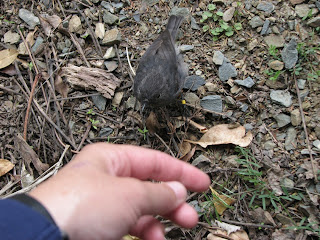Now’s the time you’ve all been waiting for: A kiwi history-biology lesson! (hisology? Biostory?). Yay!
A scant thousand years ago the three islands that make up New Zealand (North Island, South Island, Stewart Island) were green and bushy places positively writhing with jolly birdlife. The reason these birds were so jolly was that they OWNED this land. There were the giants: the Haast’s Eagle with its three-metre wingspan ruled the sky, while the mighty moa, that at four meters of height stood as the tallest bird in the world, dominated the ground. There were also some more modest species: the interesting huia, the colourful takahe, and of course the kiwi.
At that time the lone mammal round these parts was a bat, so the only predators birds had to worry about were other, bigger birds. With threats only coming from above, the ground was a pretty safe to be. Many species decided that flying was for chumps and just stopped doing it. After a while, they evolved so that they couldn’t fly if they tried (not sure if they have). Their best defence mechanism was to stand perfectly still to avoid detection from above.
All was cool for a long time, but then, around a thousand years ago, something rather cataclysmic happened. A bunch of boats landed on NZ’s shore.
When the Polynesian men, women and children disembarked from their vessels, it was the first time a non-flying mammal had set foot on New Zealand soil. That’s when the trouble began.
Let’s face it, were not exactly a species known for its conservation efforts. Predictably, the first New Zealanders went a little hog wild with the hunting and within a few hundred years, the moa, and the Haasts’s eagle (who depended on the moa for food) were mere memories.
What was even worse for the native birds was the cargo the humans brought with them. Dogs and rats had a gay old time snuffling about the bush and wrestling up some unsuspecting flightless birds by the thousands. It was devastating to the bird population, who, you will recall, defended itself by standing still to avoid detection – not so effective a strategy when dealing with a snarling beast on land.
Over the centuries, man misguidedly introduced other harmful species to NZ – the cat, the stoat, the ferret, the possum, sheep, cows – which, either through hunting or over-grazing, have all contributed to drastically lowering the endemic bird population here.
Nowadays, there are countless measures to try and save native birds – hunting them is strictly forbidden, fences are in place in some areas to try and keep out cats and dogs, stoat and possum traps dot the country’s forests, the government encourages farmers and land owners to hunt the pests. But it’s all a drop in the bucket.
Likely one of the most successful endeavours is the creation of a number of bird sanctuaries; islands that have been cleared of predators and populated with endemic birds. There are a number of these islands around the country, and for the first time last week, I got to visit one.
 |
| Motuara Island taken from the Queen Charlotte Track |
 |
Motuara Island is situated in the Queen Charlotte Sounds a good hour and a half boat ride from Picton. If you’re already doing the Queen Charlotte Track, for an extra $7 the taxi boat companies will drop you off on the island and pick you up an hour and a half later to ferry you to the start of the track five minutes away.
What a great experience. I was but one of ten people on the island that morning, and we were all respectfully silent in speech and soft of footstep. Birdsong was the only thing to be heard most of the time. Often I was completely alone with the birds for long stretches. There was a path from the wharf that corkscrewed its way around the island and led up to a lookout tower at the top. Walking very slowly, it took me about half an hour to reach the top.
So, there’s not much to say. It was quiet. It was serene. The birds seemed happy and peaceful. For twenty minutes at the end of my time there I was completely alone as the other people had come over on a different boat than me. So let’s have a look at some of the birds I saw, yeah?
 |
| The path on Motuara island. |
 |
| A native New Zealand pigeon. The thing was HUGE. |
 |
| A red-crowned parakeet |
 |
| The friendly grey robin. As you can see, they were tagged. I don't think the other species were. |
 |
| I could be wrong, but I think this is a yellowhammer. |
 |
| A silverfern unfurling. |
 |
| A sun-dappled mature silverfern. |



No comments:
Post a Comment